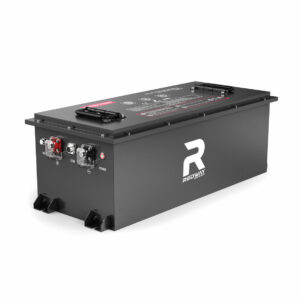What Is the Environmental Impact of RV Battery Disposal and Recycling Processes?
RV battery disposal and recycling significantly impact the environment due to toxic materials like lead and lithium. Improper disposal contaminates soil and water, while recycling reduces resource extraction but requires energy-intensive processes. Regulatory gaps and consumer awareness further shape outcomes. Sustainable practices and innovations in battery technology are critical to mitigating harm.
Future Projections for RV Battery Adoption
How Do Different Types of RV Batteries Affect the Environment?
Lead-acid and lithium-ion RV batteries dominate the market. Lead-acid batteries contain sulfuric acid and lead, which cause soil and water contamination if leaked. Lithium-ion batteries risk leaching cobalt and nickel, contributing to heavy metal pollution. Both types release greenhouse gases during improper incineration. Recycling mitigates these risks but varies in efficiency depending on battery chemistry.

Lead-acid batteries remain the most recycled consumer product globally, with a 99% recovery rate for lead. However, the process releases sulfur dioxide emissions unless scrubbers are used. Lithium-ion batteries pose greater challenges due to complex chemistries – a single RV battery may contain six different lithium compounds mixed with aluminum and copper. New research shows that cobalt from degraded lithium batteries can persist in waterways for decades, accumulating in fish tissues and entering human food chains. The energy density advantage of lithium-ion (150-200 Wh/kg versus 30-50 Wh/kg for lead-acid) also means more concentrated toxic payloads when disposal goes wrong.
| Battery Type | Recyclability | Key Pollutants | Energy Density |
|---|---|---|---|
| Lead-Acid | 99% | Lead, Sulfuric Acid | 30-50 Wh/kg |
| Lithium-Ion | 50% | Cobalt, Nickel | 150-200 Wh/kg |
How Does the RV Battery Recycling Process Work?
Recycling begins with collection at certified centers. Lead-acid batteries are crushed, neutralized, and smelted to recover lead. Lithium-ion units undergo shredding and hydrometallurgical processes to extract metals. Only 50% of lithium is typically recovered due to technical limitations. Energy-intensive steps like smelting contribute to carbon footprints, but recycled materials reduce virgin mining demand by up to 70%.
Regions with Highest RV Battery Demand Growth
Modern lithium recycling facilities now use cryogenic grinding to prevent thermal runaway during processing. A typical 100kg RV lithium battery yields 15kg of cobalt, 25kg of nickel, and 5kg of manganese through this method. However, the plastic separators and electrolytes often get incinerated, releasing HF gas requiring specialized filtration. Emerging bioleaching techniques employ bacteria like Acidithiobacillus ferrooxidans to dissolve metal components, reducing energy use by 40% compared to smelting. Pilot projects in Canada have achieved 82% lithium recovery rates using these biological methods, though scaling remains costly.
Why Do Regulatory Gaps Worsen RV Battery Pollution?
Inconsistent global regulations allow illegal dumping and substandard recycling. The U.S. lacks federal mandates for lithium-ion recycling, unlike the EU’s Battery Directive. Developing nations often lack infrastructure, leading to informal recycling with unsafe methods. These gaps increase cross-border pollution and hinder circular economy goals, leaving 40% of batteries unaccounted for in waste streams.
What Eco-Friendly Alternatives Exist for RV Batteries?
Solar-powered lithium iron phosphate (LiFePO4) batteries offer longer lifespans and non-toxic chemistry. Saltwater batteries, using sodium ions, eliminate heavy metals but have lower energy density. Reconditioning old batteries extends usability by 3–5 years. Adoption remains low due to cost barriers, though innovations like solid-state designs promise higher sustainability with 90% recyclability.
How Can Consumers Reduce RV Battery Waste Responsibly?
Use certified recyclers like Call2Recycle or Battery Council International members. Return old batteries to retailers under take-back programs. Opt for refurbished models to cut demand for new units. Advocate for stricter policies and support brands with closed-loop recycling. Proper storage extends battery life, reducing disposal frequency by 30%.
“The RV industry must prioritize modular battery designs to simplify recycling,” says Dr. Elena Marquez, Redway’s Energy Solutions Lead. “Current lithium recovery rates are unsustainable—investing in bioleaching technologies could boost efficiency to 80% while cutting emissions. Consumers also need education; 60% aren’t aware of local recycling options, perpetuating environmental harm.”
Conclusion
RV battery disposal and recycling present complex environmental trade-offs. While recycling curbs resource depletion, its energy use and inefficiencies highlight the need for cleaner methods. Stricter regulations, consumer action, and advancements in battery tech are pivotal to achieving sustainability. Collective efforts can transform this challenge into a cornerstone of the green energy transition.
FAQs
- Q: Can RV batteries be 100% recycled?
- A: No. Lead-acid batteries achieve 99% recyclability, but lithium-ion recycling caps at 50% due to technical and cost barriers.
- Q: Are lithium RV batteries greener than lead-acid?
- A: Yes long-term. They last longer and lack lead, but mining lithium has high water and carbon costs.
- Q: Where can I recycle RV batteries for free?
- A: Many auto parts stores and RV dealers offer free drop-off. Check EPA’s website for certified locations.
